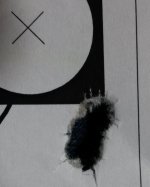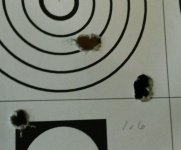Ever shoot with guys who killed a lot of people in Viet Nam?
Big stressed out guys?
I saw one in 1995 clear a jammed FAL by jumping on the cocking handle like he was kick starting a Harley.
Like a one leg pogo stick.
So there is more than one way to break off a bolt handle.
I think the Gold standard in wimpiness is the Rem700 soldered on bolt handle. When they break off you can see.. not very well soldered on.
I think I have enough 1903 Turk bolt handle weld area left that squeezes between the scope eyepiece and the receiver to support me in shear if I ever do the pogo stick move.
Jack Belk [pres of the gunsmith guild] posted some pictures 15 years ago on TIG welding Mauser bolt handles. I saved those pics. Back then a lot of guys were notching out the receiver, as does the Dumoulin. That avoids these questions about not enough metal left on the handle. I would rather leave the receiver alone.
Big stressed out guys?
I saw one in 1995 clear a jammed FAL by jumping on the cocking handle like he was kick starting a Harley.
Like a one leg pogo stick.
So there is more than one way to break off a bolt handle.
I think the Gold standard in wimpiness is the Rem700 soldered on bolt handle. When they break off you can see.. not very well soldered on.
I think I have enough 1903 Turk bolt handle weld area left that squeezes between the scope eyepiece and the receiver to support me in shear if I ever do the pogo stick move.
Jack Belk [pres of the gunsmith guild] posted some pictures 15 years ago on TIG welding Mauser bolt handles. I saved those pics. Back then a lot of guys were notching out the receiver, as does the Dumoulin. That avoids these questions about not enough metal left on the handle. I would rather leave the receiver alone.


